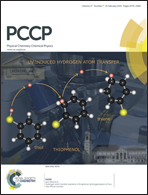Thermal vibration of a single-walled carbon nanotube predicted by semiquantum molecular dynamics
Abstract
Quantum effects should be considered in the thermal vibrations of carbon nanotubes (CNTs). To this end, molecular dynamics based on modified Langevin dynamics, which accounts for quantum statistics by introducing a quantum heat bath, is used to simulate the thermal vibration of a cantilevered single-walled CNT (SWCNT). A nonlocal elastic Timoshenko beam model with quantum effects (TBQN), which can take the effect of microstructure into consideration, has been established to explain the resulting power spectral density of the SWCNT. The root of mean squared (RMS) amplitude of the thermal vibration of the SWCNT obtained from semiquantum molecular dynamics (SQMD) is lower than that obtained from classical molecular dynamics, especially at very low temperature and high-order modes. The natural frequencies of the SWCNT obtained from the Timoshenko beam model are closer to those obtained from molecular dynamics if the nonlocal effect is taken into consideration. However, the nonlocal Timoshenko beam model with the law of energy equipartition (TBCN) can only predict the RMS amplitude of the SWCNT obtained from classical molecular dynamics without considering quantum effects. The RMS amplitude of the SWCNT obtained from SQMD and that obtained from TBQN coincide very well. These results indicate that quantum effects are important for the thermal vibration of the SWCNT in the case of high-order modes, short length and low temperature.


 Please wait while we load your content...
Please wait while we load your content...